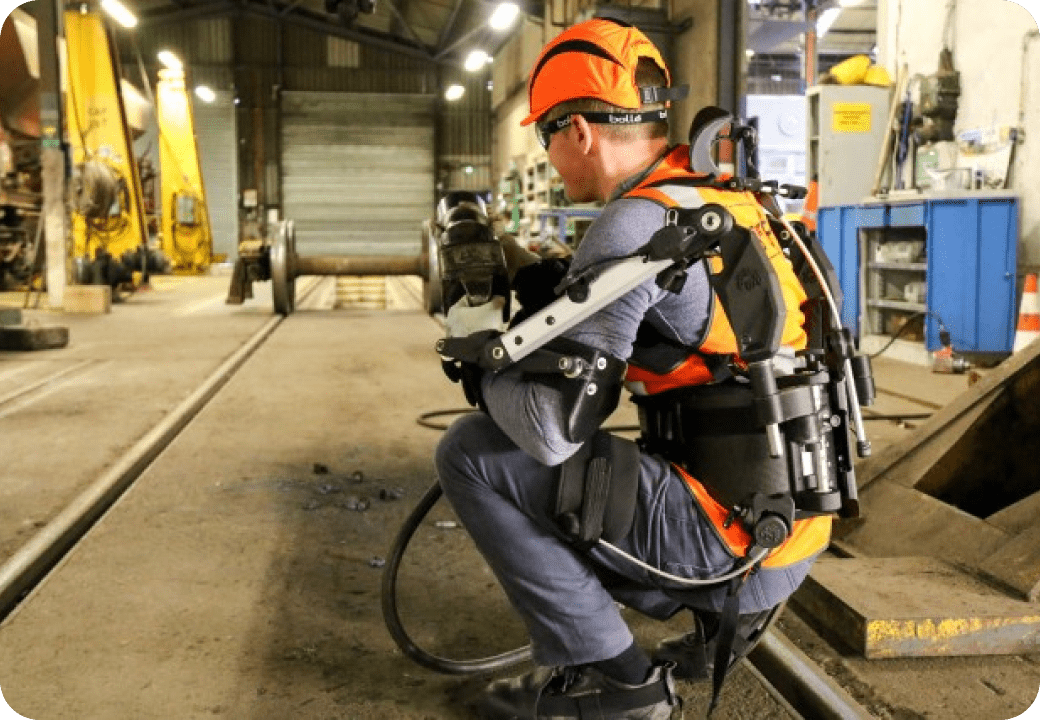Menu
Fermer
Menu
Fermer
Home > FAQ

We do have answers in our FAQ
The Canadian government organization CCOHS (Canadian Center for Occupational Health and Safety) here defines exoskeletons as follows:
Exoskeletons are wearable devices that can improve, strengthen or facilitate the user’s posture, movement or physical activity. Exoskeletons can reduce muscle stress in frequently affected areas of the body, such as the lower back or shoulders, and relieve operator discomfort and fatigue. More precisely, exoskeletons act in association with the user’s physical abilities to:
Reduce the user’s metabolic effort and thus reduce worker fatigue and the risk of burnout.
The benefits of using an exoskeleton include:
Finally, exoskeletons are recognized for combating arduousness at work and its consequences such as Musculoskeletal Disorders (MSD), work accidents, absenteeism, or demotivation.
Our philosophy is that exoskeletons protect humans, not augment them.
We do not recommend requiring employees using exoskeletons to exert more force or lift heavier loads or for longer periods of time. On the contrary, the principle is to relieve workers in their current tasks and to preserve their employment and, above all, their health for as long as possible.
The short and honest answer? Almost.
We consider that 90% of body types can use an exoskeleton. Some exoskeleton models are one size fits all and therefore adjustable, while others have specific sizes. In this case, an indicative scale provides a better idea of the model to be expected. Generally very small or very tall people will not be comfortable in our passive exoskeletons.
This is a question we are often asked and it is a logical and legitimate one. However, no study has ever demonstrated such a link.
Furthermore, exoskeletons are only used temporarily (for a maximum of one shift), the rest of the time, the muscles are normally used, which prevents atrophy. We are talking here about assistance and not replacement.
Each exoskeleton model has its own retail price and certain options may modify this price.
But to give a price scale, all the models presented on this site are between $600 for the simplest devices to a few thousands dollars for the most complex.
For bigger orders though, do not hesitate to ask about our WAAS solution (Wearable As A Service): it allows you monthly payments, as a lease.
Our exoskeletons are also guaranteed for parts and labor for different periods of time depending on the brands.